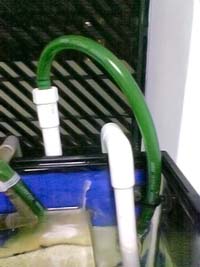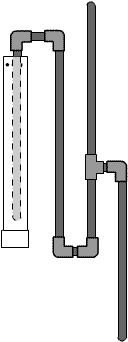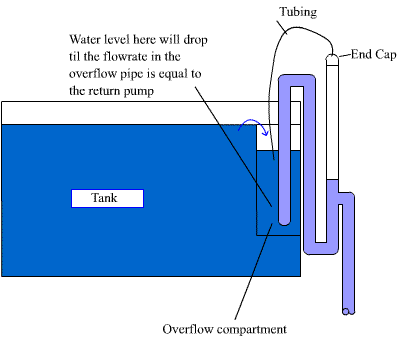
rogersoh
Newbie 1-
Posts
23 -
Joined
-
Last visited
rogersoh's Achievements
Newbie (1/14)
0
Reputation
-
Good with the live sand, live rock and bacteria starter is the first step. You can't rush for marine aquarium. You can now begin cycling the aquarium, please refer to this articles at Cycling - ReefPedia Briefly to do the cycling of the tank for the nitrogen cycling are as follows: 1. Set the new tank up with all its equipment, decorate it to your liking and fill it up. Switch the lights and filters on and leave it running as though there were fish in it. 2. Add some ammonia to the water - this can be something which will produce it such as a piece of meat the size of a thumbnail (example small dead prawn bought from market) . As the meat breaks down it will produce the required ammonia. 3. After about four days test the water for ammonia and nitrite. The results may or may not show any nitrite but keep testing two or three times per week until the nitrite level reaches 15 parts per million. 4. Once this target has been reached stop adding the ammonia (remove any remaining prawn) and just wait. 5. A few days later the ammonia levels will have disappeared but the nitrite will probably hold steady for a time. The time it takes cannot be guessed at because there are to many variables which affect it. I 6. When it has disappeared then the first fish can be added to the tank, 7. Don't add to many or what you have done so far will be wasted. 8. Add the first FEW fish i.e. 4 or 5 small fish.. The newly cycled tank won't be completely stable for the first few weeks so great care must be taken to keep the tank clean and not to over feed the fish. 9. After two weeks or so some more fish can be added and this is how you should proceed for the first 6 months of the tanks life. You can also download the podcast in mp3 format from Talking Reef Podcast the first few episode is very useful for beginner
-
Hi, I have read this article about the coral bleaching at The Coral Whisperer: Bleaching and Tissue Loss in Corals - What's the Difference? by Eric Borneman and another at The science of corals and water flow both from the Advanced Aquarist web site. I quote a paragraph of the articles: Generally when the coral loses their symbiotic algae they will not be as healthy as they can be. I do not have any personal experience in keeping coral but are doing more research and reading about it before I venture into keeping coral. Now I am having Fish only tank. Hope this help.
-
Thanks for the UPS, today I house power supply was shut down for 3 hours for upgrading of the external electical meter works. Luckly I got the UPS, and the electrical supplies to the pumps are not affected.
-
FS 4ft X 1.5 X 2.5 (12mm) Acrylic Tank
rogersoh replied to ryanlio's topic in Sell off/Pasar Malam Shop
Hi ryanlio, Yes I would like to buy it. Can reserved it for me. Please PM me for the arrangement. -
and do you have the manual for the ups?
-
Hi I am interested. Can let me know what is the weight of the unit. I need to check whether I need to ask my friend along to pick it up if it is too heavy. Best regards, Roger
-
This is how I connect the tubing back to the overflow chamber. I am using the big tubing because I got some extra length left. You can change it to normal air line tubing.
-
FS: Grey Pipings 4 2ft tanks..
rogersoh replied to searching4dan's topic in Sell off/Pasar Malam Shop
Hi Searching4dan Sorry this is out of topic, but I notices the overflow pipe shown in your post may not work as the opening is before the siphon of the overflow pipe. IMO the overflow piping system using siphoning method should be done as shown (which is from your previous post in the DIY board) -
Hi Jun It is very difficulties to give estimate on the hole size. I would recommend using the air tube in the hole method in my previous post at http://www.sgreefclub.com/forum/index.php?...ndpost&p=568018 The reason why it is difficult to estimate the size of the hole requires is that we would want the vent tube to be as low pressure as possible (preferly vaccum) but we also want to break the siphon when the return pump fails to operates. If you want to use the hole method I would suggest to use the smallest hole that you can drill maybe less than 1 mm diameter. Then you test whether it can break the siphon when the return pump stop. If not then increase the size of the hole. Using the air tubing method back to the sump is a better alternative as the flowrate will reduce immediately when the water level drop below the tube opening and increase again once it is cover.
-
You will need a overflow compartment. As long the return pump flowrate is lower than the maximum flowrate of the overflow piping system, the water level in the overflow compartmetn will drop until the equivalent is reach. After that the flowrate in and out of the tank will be the same. Hope this answer your question.
-
I also face the same problem as your when I drill a hole or remove the end cap. I solved it by connecting a tubing from the hole to the tank water and to prevent it from siphoning the tank dry I only extend it within 2 cm of the water level. This way the flowrate is not reduced and the overflow can also restart after the return pump failure. This is the win-win solution.
-
Don't understand your question. If you can provide a simple diagram then I would be able to know what will the impact be. Without the diagram I may give the wrong feedback.
-
Don't worry about the overflow causing the sump to flood druing power failure as the top of the pipe will create a siphon break once the water level drop below the top opening level. When the return flow return and water level reach above the outlet the siphon will return and it will function as per normal. It is a good design go for it.
-
Hi I am interested. But now I am oversea and will be back on Saturday morning. Is it ok to collect from you on Sunday evening?
-
Hi, Just like to check more detail first. I suspect it is caused by air binding. Is 2 of the Durso pipings in the overflow connected to a common piping before going to the sump? If yes, is it connect with a Tee joint with the Durso piping connect on the top of the Tee joint of the common piping. As the overflow piping will suck in some air, the velocity of the water in the 1st overflow piping will be high enough to cause the air will flow down thru the overflow piping. But when it reaches the common piping and the changes in the direction, the air will start to flood up, and from the opening of the Tee to the 2nd overflow piping the air will escape up thru there. If you had this problem I will suggest 2 method to solve it. 1. Using seperate piping to connect it to the sump or 2. change the overflows that joint to the common piping to the bottom and to add additional venting pipe for the air to escape out. Please allow sufficient length to prevent overflow. Hope this help



